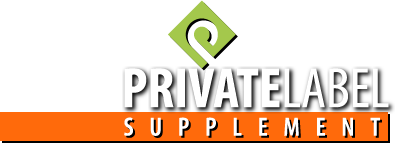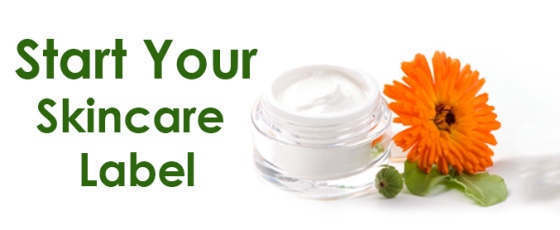
Starting your own skincare label will require thorough market research and strong marketing strategy.
Original Image by: Ayurveda Samskara / CC BY-NC-SA
As long as there are women (and men, of course) on this planet, there will be a definite need for skincare products. The world of cosmetics is constantly evolving. New and highly effective creams and lotions are being developed to ensure skin elasticity and a glowing youthful look. Do you know a woman who wouldn’t want that? We really don’t.
If you’ve been thinking of starting your own business, consider taking up supplement retail. Selling the hottest skincare products on the market, such as a private label body butter line or a private label Shea Butter line, would surely help you launch successfully.
With the approach of hot summer days, think of how you can boost your new business by selling private label Cellulite Cream. It’s perfect timing, besides, you can pair up those creams with other trending products at a reasonable, promotional price. Customers like the idea of getting more for less, so why not give it a try.
But before you settle on product lines, here are some marketing basics you need to consider for your new business in order to have an accident-free takeoff.
No matter the nature of your business and the products you’re trying to sell, just consider the 4 C’s. Analyze these four pillars of marketing strategy and they will help you position your products in a highly competitive market.
The 4 C’s of Marketing
#1. Customer
Your profitability will depend on how clearly you identify your target customers. Once you’ve figured that out, you’ll be better able to determine what those customers need and want, and you can respond with your products accordingly.
The success of your private label body butter line, for example, will depend on what value the customers perceive it to have, or as long as it caters to their needs and preferences. Cater to their inner desires, and you’ll quickly convert website visitors into buyers. Ultimately, your business decision-making is solely based on your website customers’ wishes.
#2. Cost
Remember this mantra: Affordability, Satisfaction and Value.
When thinking about cost, try to view it from the consumer point of view. Meaning, you need to consider the following:
- Decide what price will be reasonable for your potential customers to pay. To be able to estimate it, you’d have to do some research in advance. What’s affordable for your target group?
- Calculate whether your product is still profitable at the price your customer is willing to pay.
-

Calculate the price of your products considering how much your target customers would be willing to pay.shinycatcreations / Flickr / CC BY
Think about the total. Be aware that in addition to the base value of the private label shea butter you want to sell, there will be other charges to include in the final price. If you’re planning to open a physical store front, consider if driving there will not add to your customers expenses. What about the shipping charges? How much will local, state and federal taxes weigh down on the final number?
Don’t forget, however, that the price is not always the most convincing factor for a customer to make a purchase. Besides, the consumers don’t have a clear idea what is the production cost, but they have a perceived value of how much a product or service costs. So the consumers will think of your products in terms of how much they are worth to them, and how much they are willing to pay despite your marketing strategies.
#3. Communication
Finding the right channels of communication with your customers is like finding a path leading to their hearts.
- Try to answer the basic customer question “What’s in it for me?” Why should anybody buy your products? How are they adding to the overall well-being of your customers?
- Use social media, as it’s the most powerful communication tool available nowadays. You can use it to promote your products, but also to ask your customers for their honest opinion. They will let you know their pain points, so you can work toward addressing and solving them. By using social media, you can conduct polls, monitor what your customers “Like” the most, and ask for comments.
#4. Convenience
It’s all about making it easy for your customers to buy your products. Think about the following:
- Is my company visible and easy to locate both online and offline?
- Is my website user-friendly? Can customers find what they’re looking for with just a few clicks? Are product descriptions to the point and do they help your customer make a purchasing decision?
- Perhaps it’s not a bad idea to think of more outlets through which you can offer your products? A distributor, maybe? It can mean less profits at the beginning, but in the long run, your extended presence on the market will increase your sales.
- It’s important to indicate early on what kind of customer support you are ready to offer. Make sure to share your return policy, discounts, etc.
- Here’s an idea: why don’t you create a mobile edition of your website, or an app, so your products and services will be in your customers’ hands 24/7?
So far so good. But here comes the competition. As I mentioned earlier, the skincare products market is highly competitive. What can secure your unique image and place when it comes to fighting with the competition?
Competitor Research
Investigate. Try to understand your competition and that will give you an answer to the question what makes the customer choose one product over another. Learn how your competitors price their products; what are their methods of distribution and communication with their customers; what are your unique selling points (USPs) compared to theirs? Can you do better on all of those accounts?
Let’s take a look at one more thing. Competition can be either direct (selling the exact same products) or indirect (fighting for the same market niche).
- Direct competition. Your business will stand out if you offer a unique mix of options such as product features, service levels, location and price points. Then you’d be able to reach different kind of customers, or the specific target group you are aiming at. When you understand where your competitors stand, then you’d be able to position your business and fill certain market gaps.
- Indirect Competition. Here you have companies that offer different products, but target the same customers as your business does, and try to satisfy the same customer needs. To have advantage over such competition, you’d have to come up with a stellar strategy for satisfying your customer needs in a truly unique way. That’s hard, but not impossible.
That advantage could start with your one-of-a-kind brand, actually.
Brand and Label

You must identify your target customers and then cater to their needs and preferences.Stephane <3 / Foter / CC BY
The brand is your identity, and the label is your image. Through a well-thought advertising campaign you should be able to establish your brand and make it stick; to do that make it different than the brands that are already out there. Again, communication is key to your success. Make sure you communicate clearly every aspect of your business, from your product label to customer service and your USPs.
How should you handle the label? Here are some suggestions:
- Your label has to reflect your brand identity.
- It has to state clearly how your business answers your customers needs.
- It has to speak to your customers in a language they can understand.
- It should be “catchy” and easy to remember.
Conclusion
Many factors define the success of a budding business. What’s a smart approach, however, is hammering out a strong business plan. It should include all of the points discussed above, starting with identifying your customers and their specific needs. That will help you sell your skincare products with confidence and ease.
When you are ready to embark on that journey, keep in mind that Private Label Supplement can be your loyal partner along the way. We would like to be part of your efforts and help you succeed.
Don’t hesitate to contact us! We are waiting for your call. Contact our sales team at 855-209-0225 ext. 2 or email us at sales@privatelabelsupplement.com.
All my best,
Stefani Thionnet
Stay focused and never give up!








